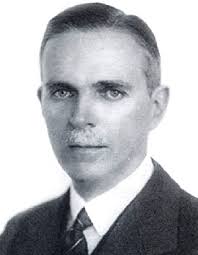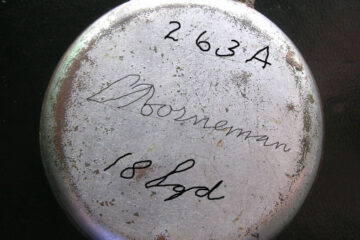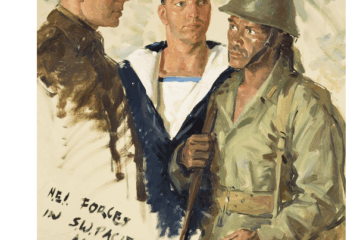The diplomatic relationship between the Netherlands and Australia, now strong and longstanding, was shaped significantly by the upheavals of the Second World War. While Dutch honorary consuls had represented Dutch interests in Australia since the mid-19th century, it wasn’t until the pressures of war and shifting global power structures that formal diplomatic ties were established between the two nations.
Early consular representation
As relations between the Netherlands, the Netherlands East Indies (NEI), and Australia deepened in the late 19th and early 20th centuries, the Dutch Ministry of Foreign Affairs began appointing salaried professional consular staff to Australia. The first such official appointment came in 1889, when Joan Adriaan de Vicq became Consul General in Melbourne. In Sydney, Hendrik Jacob Willem Huber became vice-consul in 1913 and was promoted to consul in 1914.
In 1921, following the resignation of Consul General Willem Lodewijk Bosschart in Melbourne, Petrus Ephrem ‘Peter’ Teppema in Sydney was appointed Consul General. The role remained based in Sydney until the 1940s before returning to Melbourne in 1953. However, by then, diplomatic seniority had shifted to Canberra. See: Consuls, Envoys and Ambassadors of the Netherlands in Australia since 1853
Wartime pressures and the need for formal diplomacy
With the onset of World War II and growing strategic cooperation between Australia and the Netherlands East Indies, the Dutch government proposed in 1940 to upgrade diplomatic relations through the appointment of formal envoys. The Australian government was initially reluctant, but by late 1941, amid increasing military and economic coordination, both countries moved forward.
In November 1941, the Dutch legation in Australia was formally established. The Dutch government initially nominated Tom Elink Schuurman, then Consul General in Sydney, to be its first envoy. However, the Australian government objected due to concerns about his past cordial relations with German and Japanese diplomats before the war. Instead, the Dutch government appointed Baron François Cornelis van Aerssen Beijeren van Voshol, then ambassador to Iran, as its first Envoy Extraordinary and Minister Plenipotentiary to Australia.
Baron van Aerssen’s arrival and the legation in Canberra

Van Aerssen arrived in Canberra in April 1942, becoming the first formally accredited head of a Dutch diplomatic mission to Australia. Although his post was based in Canberra, he spent most of his time in Melbourne, which had become the centre of Dutch exile activity, especially following the establishment of the Netherlands East Indies Commission for Australia and New Zealand. His primary role was to support wartime coordination and oversee diplomatic representation during the most critical phase of Dutch–Australian wartime engagement.
The Dutch legation and residence were located at 16 Mugga Way in Red Hill, Canberra—purchased from senior Australian public servant Sir George Knowles. This site continues to serve as the official residence of the Dutch ambassador to Australia.
From legation to embassy: ambassadorial relations begin
As diplomatic relations matured after the war, the legation was eventually upgraded to an embassy. In 1951, the Dutch government appointed Pedro Désiré Edouard Teixeira de Mattos as its first ambassador to Australia, marking a new phase in bilateral diplomacy. The embassy building itself was opened in 1955 on Empire Circuit in Yarralumla, Canberra.
Australia’s diplomatic appointments to the Netherlands
Diplomatic developments were mutual. During the war, Australia also took steps to formalise its representation to the Dutch government-in-exile. In 1942, Prime Minister John Curtin authorised the appointment of Australia’s High Commissioner to the UK, Stanley Bruce, as Australia’s first official envoy to the Netherlands government-in-exile in London.
After the war, Australia established a resident diplomatic legation in The Hague in 1945, initially under John Hood. In 1950, the legation was upgraded to an embassy, and in 1951, Alfred Stirling became Australia’s first accredited ambassador to the Netherlands.
A foundation laid during crisis
The transformation from honorary consuls to formal embassies and ambassadors reflected the broader evolution of both countries. Australia was asserting its independent foreign policy for the first time, while the Netherlands was adapting to new geopolitical realities in the context of colonial retreat and postwar reconstruction.
The wartime years had created new urgency and forged new trust. Though born out of necessity, these diplomatic ties became the basis for an enduring and cooperative relationship that continues today.
See also:


